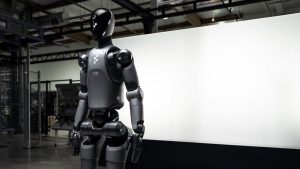
4. The world is upside down! China begins to create robots for… See more
China is preparing to enter a new era of artificial intelligence (AI) and robotics, with an ambitious plan to begin mass production of humanoid robots by 2025, according to reports from China’s Ministry of Industry and Information Technology (MIIT) and leading Chinese news agencies such as Xinhua and CGTN.This strategic initiative is part of China’s broader push to become a global technology powerhouse by accelerating advancements in AI, robotics, and intelligent manufacturing. Industry experts and analysts suggest that humanoid robots could become a major driver of industrial innovation, workforce efficiency, and economic growth over the next decade.

Humanoid robots are robotic systems designed to resemble the human body,
either partially or fully, in terms of movement, functionality, or appearance. These robots are typically powered by advanced AI algorithms, machine learning, sensor networks, and robotic actuators to perform complex tasks autonomously or semi-autonomously.Applications for humanoid robots span across:Manufacturing: Performing repetitive or hazardous tasks.Healthcare: Supporting patient care and elderly assistance.Logistics: Automating delivery and inventory processes.Public Services: Serving as receptionists, guides, or security assistants.Education and Research: Acting as learning aids or experimental models.
China’s National Strategy for Robotics Innovation
In 2023, the Chinese government released the “Guiding Opinions on the Development of Humanoid Robots”, a policy document outlining the roadmap for scaling up humanoid robot production and integrating AI into physical labor sectors. According to the MIIT, the country aims to establish a standardized framework for robot design, safety protocols, and intelligent control systems by 2025.The roadmap emphasizes three key goals:Technological Self-Reliance: Reducing dependence on foreign robotics components by nurturing domestic innovation.Industrial Ecosystem Development: Building industrial parks and innovation hubs focused on robotics R&D.Mass Commercialization: Enabling large-scale production of humanoid robots for industrial and commercial use.According to a Reuters report, China’s push aligns with its broader “Made in China 2025” strategy, which focuses on upgrading the nation’s manufacturing capabilities across key sectors such as semiconductors, AI, and robotics.



